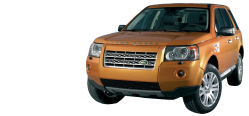
|
|
| Home · FAQ · New Posts · My Posts · PMs · Search · Members · Members Map · Calendar · Profile · Donate · Register · Log In |
 | Home > Technical > CAN Bus |
 
|
|
|
| MotionInc Member Since: 17 Jun 2019 Location: North America Posts: 1376  
|
Subbed for interest! |
||
|
| bionicbone Member Since: 19 Jan 2021 Location: Rotherham Posts: 25  
|
Freelander 2, MY2014, TD4, Manual, SALFA2CC8FH432XXX
|
||
|
| bionicbone Member Since: 19 Jan 2021 Location: Rotherham Posts: 25  
|
MS CAN Bus ID 0x4B5 contains the Visual Multimedia Data
|
||||||
|
| Vanny Member Since: 06 Dec 2015 Location: Cheshire Posts: 439  
|
Below is my best attempt at describing the different architectures.
|
||
|
| bionicbone Member Since: 19 Jan 2021 Location: Rotherham Posts: 25  
|
Hi Vanny, thanks for the reply.
|
||
|
| bionicbone Member Since: 19 Jan 2021 Location: Rotherham Posts: 25  
|
I noticed something new which has changed my thoughts that all the data I am trying to capture is always on one of the two buses.
|
||||||
|
| Vanny Member Since: 06 Dec 2015 Location: Cheshire Posts: 439  
|
First off, apologies, the VIN is in Blk2 and has the address 0x401 (not 400)
|
||
|
| bionicbone Member Since: 19 Jan 2021 Location: Rotherham Posts: 25  
|
Thank you @Vanny
|
||
|
| Vanny Member Since: 06 Dec 2015 Location: Cheshire Posts: 439  
|
I make it 224 bits of data. 28 bytes. The first byte in each response is the packet number so '21' is 'Response''Line1', then '22' is 'Response''Line2' and so on. This is not a lot of data, and it really depends on what the Autel is asking.
|
||
|
| Vanny Member Since: 06 Dec 2015 Location: Cheshire Posts: 439  
|
Oh, 0x7E8 is the ECM (Engine Control Module) not BCM, assuming you are looking at the HS CAN?
|
||
|
| bionicbone Member Since: 19 Jan 2021 Location: Rotherham Posts: 25  
|
Ah Sorry, I should be more clear, I mean 323 pieces of data, i.e. batery temperature count a x degrees C would be one peice. Thus the data response is just not long enough to cover all the live data the Autel AP200 will display as Live data from the BCM. I suspect it is onlt requesting the data on the screen, as a scroll down maybe the data request will change...
Great Info as always. You said via email you never found Fuel Guage, I have not got down to bit level yet but there are several fuel related datas in MS 0x4D4. I have validated these over a full tank of diesal taking 10 data points as the tank empties For example: Distance to Empty is (D0 * 256 + D1) / 1.609 in miles Guage like you said is a little more complicted, I have (((D6 * 256 + D7) - 19485) / 300) * 100 to give a % of tank remaining. I know thats crazy math, but while validating (only by visually checking the display) I need logical steps. This is vey close visually, maybe 1 pixel out at times. Warning Light is on D3, normally 0x00 is off, 0x80 is on. In my test the light came on when (D6 * 256 + D7) was = 19512 |
||
|
| bionicbone Member Since: 19 Jan 2021 Location: Rotherham Posts: 25  
|
@Vanny,
|
||
|
| alex_pescaru Member Since: 12 Mar 2009 Location: RO Posts: 4643 |
Some time ago, I've tried to explain, in an episodic manner, some things on the thread below...
|
||
|
| Vanny Member Since: 06 Dec 2015 Location: Cheshire Posts: 439  
|
There isn't a standard transceiver chip, and most modules have the transceiver in the MCU. They are not always decoupled. Like everything in automotive, you have to think cost. I can't think of any modules that are optically decoupled, some are galvanically decoupled. BCM
FCDIM (0x745)
IPC (0x720)
TVM
Yeah, I like to pull things apart |
||||||||||
|
| Lightwater Member Since: 21 Aug 2014 Location: Sydney Northern Beaches Posts: 4967  
|
A few more photos inside the passenger fuse box. There are 3 layers of circuit boards. https://www.freel2.com/forum/topic34833.html Procrastination, mankind's greatest labour saving device!
|
||
|
 
|
|
| All times are GMT + 1 Hour |
< Previous Topic | Next Topic > |
Posting Rules
|
Site Copyright © 2006-2025 Futuranet Ltd & Martin Lewis
![]()


